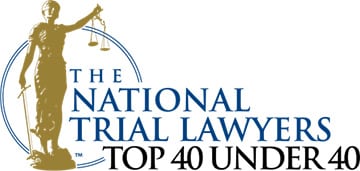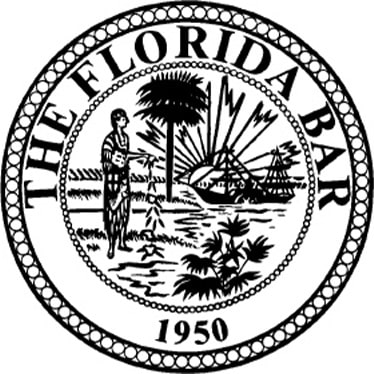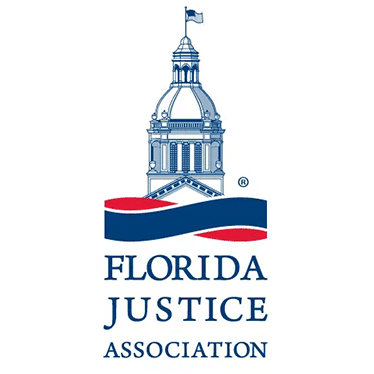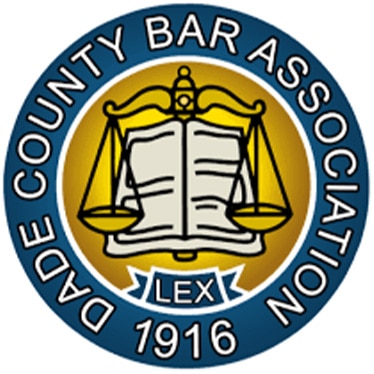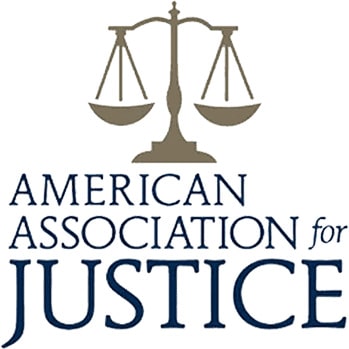Miami Sexual Abuse Attorneys
COCSA, or child-on-child sexual abuse, refers to sexually abusive behavior by one minor toward another. Understanding COCSA’s meaning is crucial for recognizing, addressing, and preventing this issue. This guide will help you identify signs, understand the impact, and find support.
Key Takeaways
- Child-on-child sexual abuse (COCSA) is often misunderstood due to stigma and underreporting, making it crucial for parents to recognize its signs and symptoms.
- Power dynamics significantly influence COCSA, necessitating parental education about boundaries and the importance of open communication to prevent abuse.
- Professional help and a supportive environment are vital for the healing process of children affected by COCSA, emphasizing the need for therapeutic intervention and parental involvement.
Get Your FREE Case Review Today
What is COCSA?
Child-on-child sexual abuse (COCSA) refers to instances where one minor engages in sexually abusive behavior toward another minor. Unlike adult-perpetrated sexual abuse, COCSA involves dynamics that are deeply entwined with the developmental stages of childhood and adolescence. This means that the contexts, understanding of harmful actions, and power dynamics differ significantly.
The term COCSA is more frequently used in online communities and support groups than in academic or legal texts. This discrepancy often leads to confusion and a lack of formal resources for parents seeking information. Grasping the distinct aspects of COCSA can aid in addressing and reducing its impact.
Open discussion about COCSA helps break down stigma, paving the way for improved support systems and effective interventions, ensuring affected children get the help they need.
Recognizing Signs of COCSA
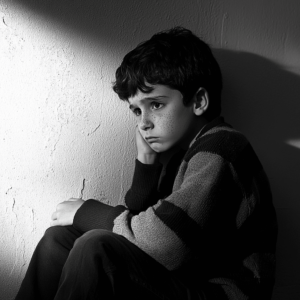 Identifying signs of COCSA can be challenging, as children often struggle to articulate their distress. Behavioral changes like sudden secrecy or reluctance to be alone with certain individuals can be telling indicators. These behaviors often signal that something is amiss, prompting parents to investigate further.
Identifying signs of COCSA can be challenging, as children often struggle to articulate their distress. Behavioral changes like sudden secrecy or reluctance to be alone with certain individuals can be telling indicators. These behaviors often signal that something is amiss, prompting parents to investigate further.
Emotional indicators are equally important. A child who suddenly becomes more fearful, loses interest in favorite activities, or exhibits drastic mood swings might be in distress during a developmental stage.
Additionally, regression to earlier behaviors, like thumb-sucking or bedwetting, can be a red flag indicating emotional turmoil.
Excessive knowledge about sexual topics that are inappropriate for a child’s age can also be a sign of exposure to sexual abuse. Parental intuition is vital when noticing these abnormal behaviors. Early detection of potential abuse can profoundly affect a child’s safety and well-being.
Approach these signs with sensitivity and support, ensuring the child feels safe and understood.
Open communication and a non-judgmental attitude can encourage children to share their experiences, leading to timely interventions.
How Common is COCSA?
The prevalence of COCSA is often underestimated due to significant underreporting. Research indicates that over one-third of child sexual abuse cases in the U.S. and U.K. are attributed to other youths. This statistic highlights the need for increased awareness and reporting mechanisms.
Victim reports suggest that approximately 75% of sexual abuse incidents involve another youth. This discrepancy between victim reports and official statistics underscores the challenges in accurately capturing the scope of COCSA. Many cases go unreported due to fears of lack of support or potential negative reactions from caregivers.
Sibling sexual abuse is particularly prevalent and often goes unreported due to stigma and fear. Understanding the commonality of these incidents can help parents and caregivers remain vigilant and proactive in addressing and preventing COCSA.
The Role of Power Dynamics
Power dynamics play a crucial role in COCSA, influencing consent and the potential for coercion. Factors such as age, emotional, cognitive, and physical development all contribute to the complexity of these dynamics. Children who are older or physically larger may exploit these differences to control or manipulate their peers.
In many cases, the shifts in power dynamics can be subtle yet impactful. Both victims and perpetrators can experience changes in their perceived power depending on the situation. Grasping these dynamics is crucial for identifying abusive relationships and taking appropriate action.
It is crucial for parents to educate children about boundaries and respect for personal space. Empowering children to understand and assert their rights can help prevent abusive situations and encourage them to speak up if they feel uncomfortable.
Understanding the Impact of COCSA
The impact of COCSA on victims can be profound and long-lasting. Survivors may struggle to identify their experiences as abuse due to societal perceptions of childhood innocence. This can complicate the healing process and lead to feelings of isolation and confusion.
Reports of COCSA are sometimes minimized or disbelieved, which can further hinder the recovery of victims. Self-harming behaviors and changes in eating habits are indicators that a child might be struggling with mental health issues related to abuse. The trauma from sibling sexual abuse, in particular, often results in higher rates of anxiety and depression compared to abuse by adults.
Long-term effects of COCSA can include flashbacks, low self-esteem, and difficulties with intimacy and relationship-building later in life, including various PTSD symptoms. Recognizing these impacts and providing appropriate support is vital for the well-being of survivors.
Legal Considerations and Reporting
Understanding the legal aspects of COCSA is essential for ensuring the safety and justice for the victims. Legal definitions of COCSA can vary significantly based on jurisdiction, often encompassing non-consensual sexual activity among minors. Legal consequences may arise for parents who fail to report known or suspected child sexual abuse.
In some jurisdictions, mandatory reporters such as teachers, doctors, and social workers are required to report any reasonable suspicion of COCSA. Child Protective Services (CPS) has a duty to investigate claims, ensuring the safety of the child victim. This often includes assessments of family dynamics and ensuring that the child is in a safe environment.
It is critical for parents to document any evidence or observations before contacting authorities. Consulting legal counsel can help navigate the reporting process and ensure compliance with local laws. Ensuring the victim’s safety and taking appropriate steps before reporting is paramount.
Contact us today for your free & confidential case review. Our team will help you get the compensation that you deserve.
Seeking Professional Help
Professional help is a critical step in the healing journey for children affected by COCSA. Finding therapists who specialize in childhood sexual abuse ensures effective treatment. Parents should seek professional therapists with credentials and experience relevant to COCSA.
Parental involvement in therapy can significantly enhance the healing process. A good therapist can help children navigate their complicated feelings, reduce anxiety, and improve their overall well-being. Professional assistance is key for addressing trauma and fostering a supportive environment for recovery.
Engaging in therapy can also help parents understand their own experiences and how to better support their children. It can be a transformative process that fosters healing for the entire family.
Supporting Your Child Through Healing
Consistent reassurance and a safe environment are crucial for supporting your child through the healing process. Children need to feel that they can express their feelings without fear of punishment or judgment. Creating an environment where children feel safe to speak up is crucial for their recovery.
Encouraging open-ended conversations over direct questions can help children share their feelings and concerns more freely. Reassuring them that supportive adults are working to ensure their safety can restore their sense of security.
Active engagement in a child’s life helps parents identify signs of distress and encourage open communication. Seeking therapy or counseling if emotional distress is evident is key to supporting your child’s healing journey.
Preventative Measures for Parents
Preventing COCSA requires proactive measures and education. Establishing clear boundaries about personal space and touch empowers children to understand their bodily rights. This knowledge can help them recognize inappropriate behavior and feel confident in asserting their boundaries.
Teaching children the correct names for body parts enables effective communication about abuse. Ongoing conversations about personal space and respect foster an environment where children feel comfortable discussing their concerns.
Parents should model respectful behavior and boundaries in their interactions, setting a positive example and reinforcing the importance of mutual respect and personal space.
When Sibling Sexual Abuse Occurs
Sibling sexual abuse presents unique challenges for families. In the U.S., around 2.3% of children were identified as victims of sibling sexual abuse in 2014. Children in foster care or with poor parental relationships are at a heightened risk and may find it harder to disclose their experiences.
Reporting sibling sexual abuse incidents is crucial to ensure the safety of all parties involved. Emphasizing safety for everyone involved is essential when handling these situations. Grandparents or another family member may need to step in when parents are not present, impacting how the abuse is addressed within the family.
Families sometimes respond by reporting incidents to multiple homes and family members. Ensuring the child feels safe and supported during this process is vital for their recovery and well-being.
Addressing Guilt and Shame
Feelings of guilt and shame are common among victims of child sexual abuse, even though they are blameless. Concern about upsetting others can contribute to these feelings. It’s essential for parents to convey to their children that they are not at fault for the abuse.
Victims often feel additional shame due to society’s stigma and lack of conversation about their experiences. Reactions to a victim’s disclosure can range from discomfort to disgust, further complicating their feelings. Understanding that shame is a natural response to trauma can help victims navigate their emotions more effectively.
Working with a trauma therapist can help children manage feelings of guilt related to COCSA. Parents should ensure their children feel believed and their feelings acknowledged, which significantly aids in emotional recovery.
The Role of Schools and Community Organizations
Schools and community organizations play a crucial role in preventing and addressing COCSA. Silencing strategies, like threats of social isolation, can prevent children from disclosing sibling sexual abuse. Educational programs in schools and community organizations can raise awareness and create a supportive environment for children.
Organizations like RAINN provide valuable resources, including a National Sexual Assault Hotline, to help connect families with trauma therapists. Schools can also provide support through counselors and educational initiatives that promote understanding and prevention.
Creating a network of support within the community can help children and other children feel safe and supported, encouraging them to speak up about their experiences and seek support when needed.
Frequently Asked Questions
What is COCSA?
How can I recognize the signs of COCSA in my child?
How common is COCSA?
What should I do if I suspect COCSA?
How can I support my child through the healing process?
To support your child through the healing process, create a safe environment, and encourage open communication while seeking professional help from experienced therapists. This approach fosters trust and allows your child to express their feelings. If your child has been sexual abused in Florida, contact our Miami Sexual Assault attorneys today.
Last updated Friday, November 14th, 2025





